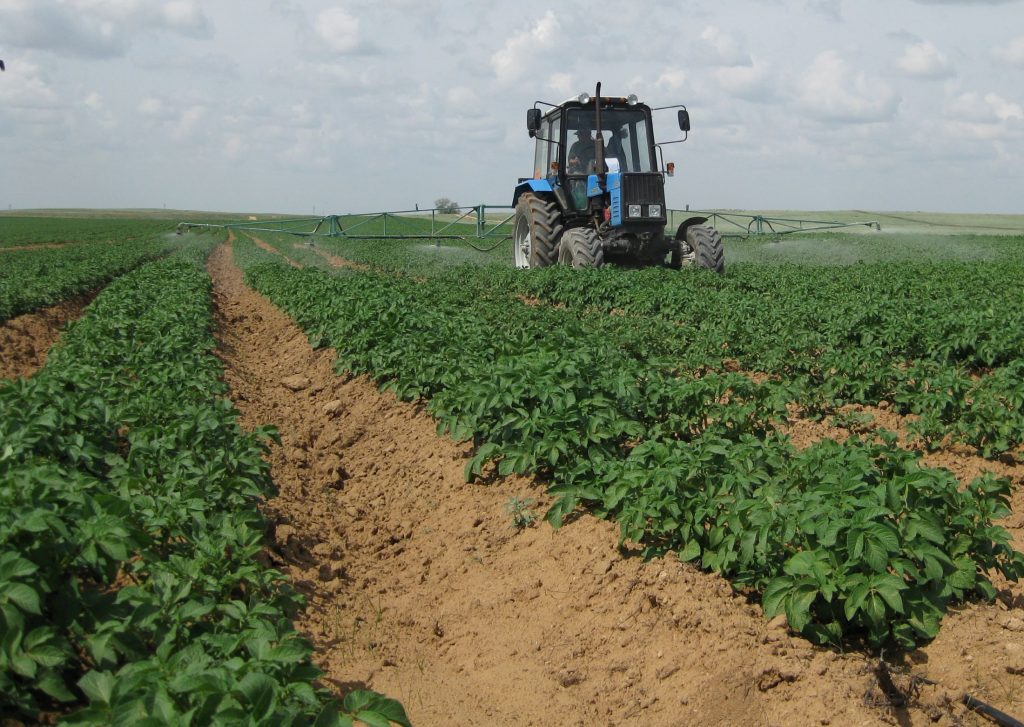
Alternatives sought to help manage Colorado potato beetles
Neonicotinoid insecticides are important for managing Colorado potato beetles and aphids in potatoes, but challenges to their use are growing.
More retailers are requiring their suppliers to use integrated pest management practices, and other retailers are phasing out products that contain the insecticide altogether.
EPA’s review of the impact of neonicotinoids (commonly called neonics) on endangered species continues, with indications that their use will be restricted in the future. Critics have linked widespread neonic usage with rising resistance among pest populations, harm to pollinators and environmental contamination. As a result, major retailers such as Walmart and Costco have encouraged fresh produce suppliers to phase out the chemicals.
Resistance issues have slowly reduced the effectiveness of neonics for controlling Colorado potato beetles, shortening their efficacy window. Vegetable entomology research from the Groves Lab at the University of Wisconsin found the efficacy window has been shortened by 50 days since the insecticides were registered in 1995. This translates to 3.3 more calendar days of lost control or 35 Growing Degree Days (GDD) per year.
GDD is a weather-based crop development calculation that measures heat accumulation to predict plant and pest development rates.
“At one time, an at-planting application offered much more effective control,” said Zsofia Szendrei, professor and vegetable Extension specialist in the Department of Entomology at Michigan State University. “Now, growers are only getting a month to a month and a half of control, or maybe a little longer.”
Szendrei, who researches chemical ecology, biological control, habitat management and behavioral pest management, is leading a national potato research team looking for neonicotinoid alternatives. USDA’s Specialty Crop Research Initiative announced funding for a $6 million project to study insect pest management strategies for potatoes in February. A key goal of the project, supported by Potatoes USA, is to explore alternatives to using neonicotinoids.
Colorado potato beetles are good at adapting to toxins in insecticides because they evolved to feed on the leaves of solanaceous plants which contain toxic alkaloids. Solanaceous plants are of the nightshade family and include potatoes, tomatoes, eggplants and peppers. Exposure to sublethal doses of neonicotinoids is another reason for increasing resistance, as is the over-reliance on a single class of insecticide.
Neonicotinoids have many commercial names and several active ingredients, including imidacloprid, thiamethoxam, acetamiprid, clothianidin and dinotefuran. All of the active ingredients are in the same MoA (Mode of Action) class of 4A, and they kill insects in the same way. The overall result of the increased resistance is that more scouting and more foliar applications are needed to control Colorado potato beetle.
In the meantime, following the standard strategy for managing Colorado potato beetle resistance continues to be the best plan, experts say:
- Do not use a foliar neonicotinoid insecticide later in the season if a neonicotinoid insecticide was applied at planting.
- Rotate crops and keep a minimum of one-quarter of a mile between potato fields.
- Preserve natural controls by using selective insecticides and base treatments on scouting, proper sampling procedures and action thresholds.
- Do not apply insecticides below labeled rates, use potato trap crops on field edges and spot treat when feasible.
Colorado potato beetle (CPB) populations have an amazing ability to develop resistance to insecticides — including many of the carbamate, organophosphate, pyrethroid, spinosyn, and neonicotinoid insecticides that are used today. CPB’s capacity to develop resistance is not surprising when you consider this pest had to adopt ways to tolerate high concentrations of toxic glycoalkaloids in their solanaceous hosts. In essence, these beetles are pre-equipped to deal with toxins. It may take only small changes to confer resistance to new toxins.
Moreover, CPBs produce huge numbers of offspring, greatly increasing the odds insecticide-resistant mutants will occur randomly. Consider that 50 eggs per plant, multiplied by 20,000 potato plants per acre, can produce a million beetles in just one generation. And there are often two or three generations in a season. When an insecticide is first applied to a crop, a small number of targeted pests (perhaps just one in 10 million) may survive because of a random mutation. If nothing else kills them, the few resistant mutants will reproduce. And many of their offspring will inherit the insecticide resistance trait.

- Potato Crop Rotation and Separation : CPBs overwinter as adults in the soil in the previous year’s potato fields then emerge in the spring to feed, mate, and lay eggs. Larvae emerge from eggs, feed for a while, and then drop to the ground to pupate and start the cycle over again as many as three times in a season. Placing this year’s potatoes far from last year’s makes it harder for CPBs to find something to eat when they emerge. They feed only on solanaceous crops and weeds, and they do not travel long distances. For this strategy to effectively reduce CPB pressure, separate the field by at least 0.25 miles
- Spray Considerations : Some insecticides degrade if the spray solution is too acidic (e.g., spinosad, spinetoram). Others degrade if the solution is alkaline-neutral (e.g., phosmet). And you shouldn’t use some insecticides with sticker/binder type adjuvants (e.g., abamectin and thiamethoxam). These products will not work well if you don’t pay attention to these details, which are usually included in the product label.
- Application Timing and Rate :
It is tempting to make foliar insecticide applications as soon as you see adult beetles. But you usually gain better efficacy if you wait for the larvae to emerge. Most insecticides work best against newly hatched, small larvae. We usually recommend making foliar applications when about 50% of the larvae have hatched. Monitor CPB populations closely to get the timing right. Use the full label rate (dosage) of the insecticide for the best results. - Rotate Insecticides with Different Modes of Action :
Relying on a single insecticide (or multiple ones that kill with similar modes of action) can quickly result in resistance or cross-resistance in CPB populations. The Insecticide Resistance Action Committee (IRAC) organizes insecticides according to their mode of action. So you need to rotate insecticides from different IRAC groups with each application. If you don’t kill resistant mutants with one, you can probably control them with a subsequent application of a completely different insecticide. - Neonicotinoid Insecticides :
Many potato growers report excellent control of CBPs when they apply a neonicotinoid (IRAC Group 4) at planting or hilling. It’s been known to provide 80 to 100 days of residual control. But exposure to insecticides with long persistence in the foliage can create strong selection pressure towards resistance. There are many neonicotinoid-resistant CPB populations in the East and Midwest. To minimize risk in the West, we ask growers if they used an at-plant or at-hilling neonicotinoid, to not apply any foliar neonicotinoids in-season. - Volunteer Potatoes and CPBs :
Volunteer potatoes are an early food source and breeding ground for CPB adults that emerge in last year’s potato fields. They tend to linger on these plants, but some of their offspring may eventually find their way into this year’s potatoes. If volunteers are common in your region, be on the lookout for these late arrivals. Insecticides applied to control CPBs that showed up earlier (with an at-plant neonicotinoid) will have probably expired. - Extended Diapause :
Some CPB populations avoid exposure to insecticides by staying underground longer and delaying their development. This resistance strategy is called extended diapause. This is another reason to monitor CPB populations in potato fields closely. You can make applications when the pests are present rather than spraying on a calendar basis.

